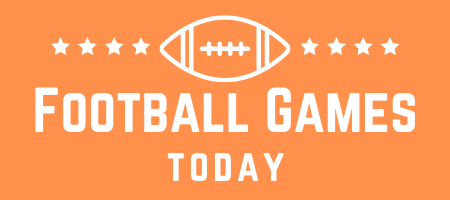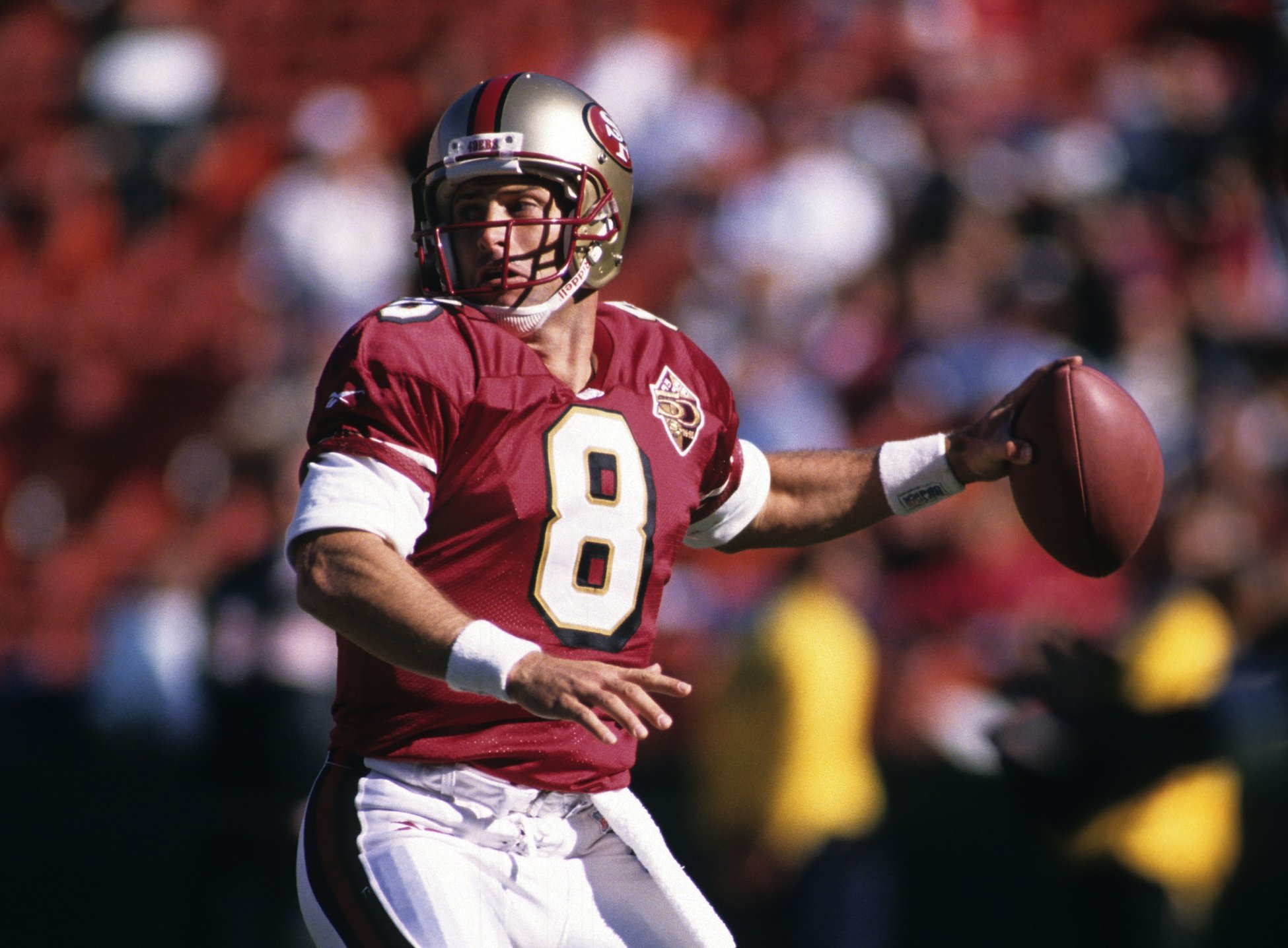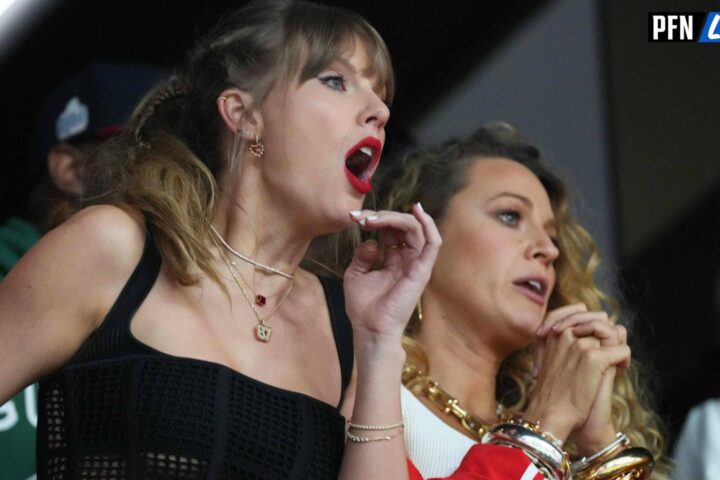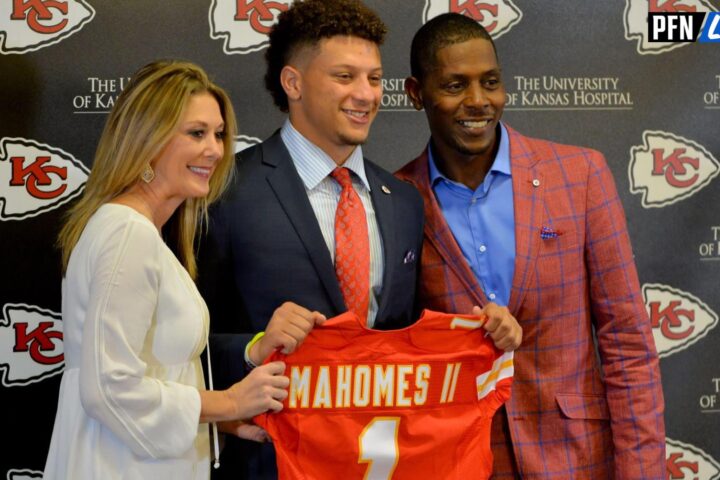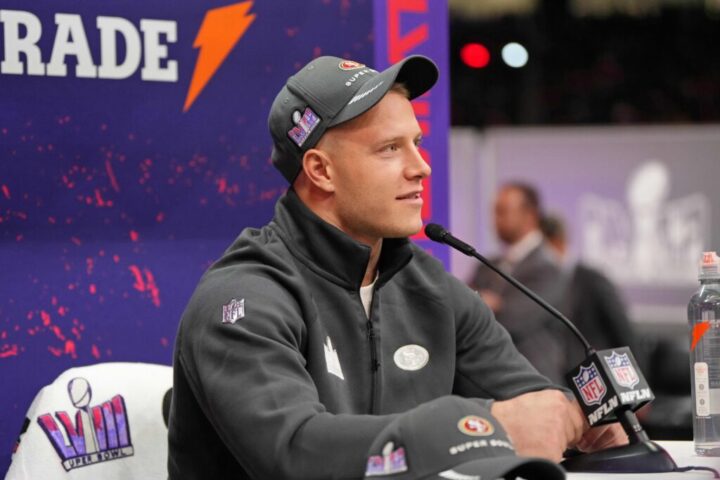Whether it’s the regular season or the offseason, the modern NFL gives fans a trading palooza year-round. Between the Russell Wilson trade and those of A.J. Brown, Stefon Diggs, Christian McCaffrey, and Matthew Stafford, the past few years of NFL football have seen stars changing teams at near-NBA levels of frequency.
And though the game didn’t always see big names shipped around multiple times per year, historically, the NFL has long produced trades of a blockbuster nature. Which ones take the cake as the biggest in NFL history?
5 Biggest Blockbuster NFL Trades of All Time
In compiling this list, I’m considering a variety of factors, including the player’s career before and after the trade, the number of assets swapped, the trade’s impact on each team, and how the trade shifted the NFL landscape. This list will not include plain pick-for-pick swaps in the NFL draft — at least one player must be included for consideration.
What Was the Biggest NFL Trade?
You’ll be hard-pressed to find a list of the biggest trades in NFL history that doesn’t have Herschel Walker up at the top.
The standout running back’s career started with an electric run in the USFL, where, as one of the best backs in the shortlived pro league’s history, Walker amassed a whopping 5,562 rushing yards and rushing scores in just three seasons.
He was subsequently selected by the Dallas Cowboys in the fifth round of the 1985 NFL Draft and went on to be immensely productive for the team, culminating in a stellar third NFL season in which he totaled over 2,000 scrimmage yards. Midway through his fourth year in the big leagues, the Minnesota Vikings came calling.
The Vikings, wanting Walker badly, sold the farm. While there was no actual farmland involved in this transaction, there might as well have been; the Vikings gave up several assets. Minnesota traded four players and eight future draft selections, which eventually turned into the foundation of Dallas’ dynastic 1990s run.
Those picks yielded Cowboys legends RB Emmitt Smith (a Hall of Fame player at Walker’s position), CB Kevin Smith, DT Russell Maryland, and S Darren Woodson. The yield for the Vikings? Not as great. Not even close. Walker was supposed to be the missing piece to a Super Bowl run, but in his 2.5 seasons with the team, Minnesota never surpassed the Divisional Round.
MORE: List of Olympians That Have Played in the NFL
Walker was productive in purple, but not exceptionally so, maxing out at 1,029 yards from scrimmage and 10 scores in 1991. This trade, while gargantuan in nature simply due to the sheer number of assets moved (18 — the most in NFL history in a single trade), also changed the nature of the NFL landscape and both teams’ long-term futures.
Dallas went on to win three Super Bowls in the next decade with its newly minted foundational pieces that made up some of the greatest NFL teams of all time, while Minnesota was mired in upper-tier mediocrity through that span.
The Herschel Walker trade is not only the biggest blockbuster NFL trade in league history but also very possibly the most lopsided one as well.
Fun fact: this trade is also the most notable three-team trade in NFL history. The then-San Diego Chargers received RB Darrin Nelson from Minnesota in exchange for a mid-round draft pick as part of the overall transaction.
2) John Elway Forces a Trade to the Denver Broncos
The crown jewel of one of the best quarterback classes of all time, John Elway knew that he didn’t want to play for the Baltimore Colts. But that didn’t stop the team from selecting him first overall in the 1983 NFL Draft.
With Elway leveraging the possibility that he’d leave football behind altogether for a career in baseball (the New York Yankees selected him in the second round of the 1981 MLB Draft), the Colts were forced to deal him.
While a number of teams attempted to close a deal, it was the Denver Broncos who submitted the most enticing offer: offensive lineman Chris Hinton (the fourth overall pick in the same draft class), backup QB Mark Herrmann, and a 1984 first-round pick (which turned into Pro Bowl guard Ron Solt).
The deal wound up being productive for both sides, though obviously far more so for Denver. Hinton made several All-Pro teams and spent seven seasons with the Colts, and Solt was with the team for five years and made a Pro Bowl. Of course, Denver would make the trade 100 times out of 100, as Elway eventually evolved into one of the best QBs in NFL history and led the team to two Super Bowl victories.
The Colts, after losing Elway, would largely remain irrelevant until the arrival of the franchise’s own QB savior, Peyton Manning. The Broncos dominated the AFC through most of Elway’s tenure, reaching the playoffs 10 times, including five trips to the Super Bowl.
3) The Atlanta Falcons Overlook Greatness and Send Brett Favre to the Green Bay Packers
Sorry, Atlanta Falcons fans, but this blunder might be worse than 28-3.
Following a stellar career at Southern Miss, Brett Favre was selected in the second round of the 1991 NFL Draft by Atlanta. His first year in the NFL, however, was a disaster.
Favre played in just two games and attempted four passes, two of which were picked off and the first of which was returned the other way for a touchdown. Then-Falcons head coach Jeff Glanville, who was not a proponent of drafting Favre in the first place, believed the QB’s party-centric lifestyle was a bad fit for Atlanta and was open to trading him the following year.
MORE: Ranking the Top Quarterbacks in NFL History From Tom Brady to Warren Moon
Packers Hall of Fame GM Ron Wolf, who was a fan of Favre in the 1991 NFL Draft, sent the 17th overall pick in the 1992 NFL Draft in exchange for the gunslinging QB. The Falcons later traded the pick to the Cowboys and moved back two spots to select RB Tony Smith, who lasted just three seasons in Atlanta.
Favre would go on to become one of the league’s greatest QBs and earn a bevy of accolades, including a Super Bowl ring, a league-best three consecutive MVP Awards, NFL Offensive Player of the Year, three first-team All-Pro selections, three second-team All-Pro selections, and 11 Pro Bowl nods.
Atlanta also unwittingly handed Green Bay a three-decades-long run of Hall of Fame-worthy quarterback play, as Favre would eventually hand the Packers QB baton to 2005 first-round pick Aaron Rodgers.
4) Marshall Faulk Joins the St. Louis Rams in a Win-Win Transaction
The Greatest Show on Turf was about to reach offensive heights rarely seen in the NFL history books, but St. Louis needed a star running back.
Enter: Marshall Faulk. Desiring a new contract and on a team that was ready to compete but didn’t want any divisiveness in the locker room, Faulk’s time with the Indianapolis Colts was coming to an end. Prior to the 1999 season, the Colts traded him to the Rams for second- and fifth-round picks in the 2000 NFL Draft.
Those picks became LB Mike Peterson and DE Brad Scioli, but it wasn’t the selections themselves that made the transaction a win-win. With Faulk shipped away, Indy had room on its roster for a new star running back, Edgerrin James.
James, a Hall of Famer in his own right, was an immediate star in Indianapolis after being selected fourth overall in the 1999 NFL Draft. He helped Manning’s offense transform into one of the league’s best.
The second pick in the 1994 NFL Draft, Faulk, was already an elite RB with the Colts, but his career reached new levels with the Rams. He won three straight Offensive Player of the Year awards, the second of which was paired with NFL MVP honors.
Faulk’s first three-year stretch playing alongside QB Kurt Warner and WRs Isaac Bruce and Torry Holt also netted him a Super Bowl ring, as he and the Rams defeated the Tennessee Titans by a score of 23-16 in Super Bowl XXXIV. Faulk was stymied on the ground, only churning out 17 yards, but he was a key asset in the passing game, hauling in five receptions for 90 yards.
This trade represents one of the rare instances in which a swap plays out swimmingly for the franchises on both ends. The Rams and Colts each ended up with running backs who now have busts in Canton, Ohio, and powered two of the elite offenses of the 2000s.
5) Steve Young’s Arrival in San Francisco Assures the 49ers Another Decade of Dominance
It’s quite rare that a team is able to smoothly transition from one Hall of Fame QB to another, which is a key reason why the two most prominent examples of such a feat are featured on this list.
Steve Young spent two successful seasons in the USFL before being selected by the Tampa Bay Buccaneers with the first pick in the 1984 Supplemental Draft. He flamed out quickly in Tampa, throwing just 11 touchdowns to 21 interceptions over two seasons.
Legendary 49ers head coach Bill Walsh was still a believer in Young, however, and when the Bucs drafted Vinny Testaverde first overall in 1987, Walsh secured Young’s services by sending second- and fourth-round picks to Tampa. With those selections, the Bucs wound up with role players Winston Moss and Bruce Hill.
MORE: Steve Young — A Life With Shanahan
The 49ers, on the other hand, received a future Hall of Fame QB and their heir apparent to Joe Montana.
Young’s career in San Francisco was a resounding success. After the Niners traded Montana to the Kansas City Chiefs (a move that nearly wound up on this list), Young took over and passed every test with flying colors. He received NFL MVP and Offensive Player of the Year honors in his first season as a full-time starter.
Two seasons later, Young again won the NFL MVP award and, more importantly, secured his first Lombardi Trophy as a starter (and third in total after the 49ers won two with Young as a backup to Montana).
